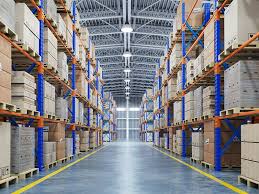
Inside Look at the Top Trends Reshaping Warehousing Services in India
The warehousing industry in India is experiencing a significant transformation driven by technological advancements, evolving consumer demands, and changes in the regulatory landscape. With the rapid growth of e-commerce, the need for efficient warehousing and logistics solutions has never been greater. In this article, we delve into the top trends reshaping warehousing services in India and how they are shaping the future of the industry.
1. Adoption of Automation and Robotics
One of the most prominent trends in the warehousing industry is the adoption of automation and robotics. With the rise of e-commerce giants like Amazon and Flipkart, there is a growing demand for faster order processing and fulfillment. Automated guided vehicles (AGVs), robotic arms, and automated sorting systems are increasingly being deployed in warehouses to streamline operations and reduce manual labor. These technologies not only improve efficiency but also enhance accuracy and reduce errors in inventory management.
2. Implementation of Warehouse Management Systems (WMS)
Warehouse Management Systems (WMS) play a crucial role in optimizing warehouse operations by providing real-time visibility into inventory levels, order status, and shipment tracking. In India, there is a growing emphasis on implementing advanced WMS solutions to improve inventory accuracy, reduce stockouts, and enhance order fulfillment efficiency. Cloud-based WMS platforms are gaining popularity due to their scalability, flexibility, and cost-effectiveness, allowing warehouse operators to adapt to changing business needs seamlessly.
3. Expansion of Multi-level Warehousing
With urbanization and population growth leading to space constraints in metropolitan areas, there is a rising trend towards the expansion of multi-level warehousing facilities. Multi-level warehouses utilize vertical space efficiently, allowing companies to store more inventory in smaller footprints. This trend is particularly prevalent in tier-1 cities like Mumbai, Delhi, and Bangalore, where land availability is limited, and real estate prices are soaring. By maximizing storage capacity, multi-level warehouses help reduce storage costs and improve supply chain resilience.
4. Integration of Internet of Things (IoT) Technology
The Internet of Things (IoT) is revolutionizing the warehousing industry by enabling real-time monitoring and management of assets, equipment, and inventory. IoT sensors and devices embedded in warehouse facilities collect data on temperature, humidity, motion, and other parameters, providing valuable insights into warehouse operations. By leveraging IoT technology, warehouse operators can optimize inventory storage, prevent product spoilage, and enhance worker safety. Furthermore, IoT-enabled predictive maintenance helps minimize downtime and prolong the lifespan of warehouse equipment.
5. Embrace of Sustainable Practices
Sustainability has become a key focus area for warehousing companies in India as environmental concerns and regulatory requirements continue to increase. From energy-efficient lighting and solar power generation to rainwater harvesting and waste recycling, warehouses are adopting various sustainable practices to reduce their carbon footprint and minimize environmental impact. Additionally, the use of eco-friendly packaging materials and the implementation of green logistics strategies contribute to a more sustainable supply chain ecosystem.
6. Rise of On-demand Warehousing
The on-demand economy has extended its reach to the warehousing sector, giving rise to on-demand warehousing services that cater to the fluctuating storage needs of businesses. On-demand warehousing platforms connect companies with excess warehouse space to those in need of temporary storage solutions. This model provides flexibility and scalability, allowing businesses to scale their warehousing operations up or down based on seasonal demand fluctuations or market trends. On-demand warehousing also enables companies to enter new markets quickly without significant upfront investment in fixed assets.
7. Implementation of Blockchain Technology
Blockchain technology is gaining traction in the warehousing industry due to its ability to enhance transparency, traceability, and security in supply chain operations. By leveraging blockchain-based systems, warehouses can create immutable records of inventory transactions, authenticate product provenance, and streamline documentation processes. This helps reduce the risk of fraud, counterfeiting, and inventory discrepancies while ensuring compliance with regulatory requirements. Blockchain also facilitates efficient collaboration and data sharing among supply chain partners, leading to greater efficiency and trust in the ecosystem.
8. Focus on Last-Mile Delivery Solutions
Last-mile delivery remains a critical challenge for e-commerce and logistics companies in India, given the country's diverse geography and congested urban areas. To address this challenge, warehousing companies are investing in innovative last-mile delivery solutions such as drone delivery, autonomous vehicles, and micro-fulfillment centers. These solutions enable faster, more cost-effective delivery of goods to customers' doorsteps, enhancing the overall customer experience and driving customer satisfaction and loyalty.
Conclusion
The warehousing services in India is undergoing a profound transformation driven by technological innovation, changing consumer expectations, and sustainability imperatives. From automation and robotics to IoT technology and blockchain, warehouses are embracing digitalization to optimize operations, improve efficiency, and deliver superior customer experiences. As the industry continues to evolve, companies that adapt to these trends and invest in cutting-edge technologies will position themselves for success in the dynamic and competitive Indian market.